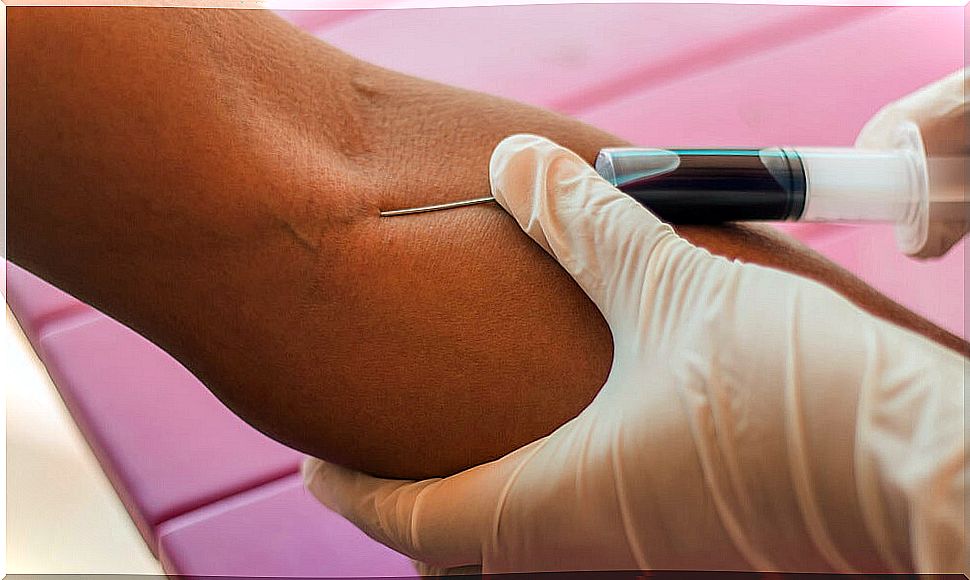Von Willebrand’s Disease
Von Willebrand disease is a blood disorder that consists of a bleeding disorder.
Causes of the disease
When a wound occurs there are a series of physiological mechanisms that act and plug the injury to prevent bleeding. All these mechanisms are encompassed under the term “coagulation”. Clotting is the process by which blood stops being liquid and becomes thicker (like a gel) and forms clots.
In the coagulation process, one of the factors involved is von Willebrand factor. It is a glycoprotein in the blood that is activated in the first moments of hemostasis and encourages platelets to unite and form a mesh at the site of vascular injury.
However, in patients with von Willebrand disease there is a hereditary defect of this factor. The consequence of this is that the amount of von Willebrand factor is lower or it does not act normally.
However, in these people the blood takes longer to clot so the bleeding does not stop as quickly.
Types of von Willebrand disease
Type 1

This is the most frequent of all. It is characterized by the fact that patients’ von Willebrand factor levels are lower than normal. It is a bleeding disorder with very mild manifestations. It is estimated that 9 out of 10 people with type 1 von Willebrand disease do not know they have it.
Type 2
This class is characterized by a defect in the structure of the von Willebrand factor. So, the amount may be normal but it does not work properly. Bleeding is usually significant, which is why it is considered more serious than type 1.
Type 3

In this case, patients present a quantitative von Willebrand factor deficiency ( there is no glycoprotein or its levels are minimal ) and qualitative (if the factor appears, it is unable to act on platelets). For all these reasons, it is considered the most serious type of disease. Bleeding is intense and appears spontaneously without injury (injury, trauma, etc.).
Characteristic signs and symptoms
Von Willebrand disease has a wide spectrum of signs and symptoms. Depending on the type of disease, the manifestations that may occur are:
- Hemorrhage in the gastrointestinal tract.
- Gingivorrhagia (bleeding gums).
- Heavy and prolonged menstrual period.
- Prolonged bleeding in small wounds.
- Frequent and prolonged epistaxis (nasal bleeding).
- Propensity to develop bruises from minor trauma.
There is a higher incidence of von Willebrand disease in women than in men. These patients are at high risk of bleeding during labor or during menstruation.
In addition, her menstrual cycle is often irregular and is accompanied by menstrual cramps. Blood group is also a risk factor for developing the disease.
Diagnosis of the disease

The diagnosis of von Willebrand disease is complicated. The majority of patients who attend hematology services are those with the most severe manifestations. However, patients with mild types of the disease are usually not diagnosed.
The procedure to diagnose the disease is based on a compatible medical history, accompanied by genetic studies that indicate the presence of a family history. It is always accompanied by a series of tests with the aim of studying coagulation disorders:
- Bleeding time.
- Platelet function tests.
- Von Willebrand factor antigen.
- Von Willebrand factor multimers.
Treatment of von Willebrand disease
According to the MSD Manual, “the treatment consists of the control of the bleeding with replacement treatment (factor VIII concentrate of intermediate purity inactivated by virus) or desmopressin”.
Treatment depends on the type of disease the patient has. In milder cases, it is not necessary to receive any type of medication. It only needs to be taken into account when scheduling surgery.
When the manifestations are moderate or severe, a pharmacological treatment is carried out. These patients take desmopressin (a synthetic drug) when the manifestations are moderate, or von Willebrand clotting factor concentrates when the symptoms are more severe.
In the case of women with significant menstrual disturbances, it is recommended to combine the aforementioned treatment with oral contraceptives. In this way, bleeding is minimized and anemia (characterized by lack of iron and fatigue) is avoided.









